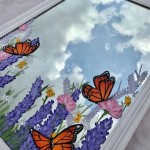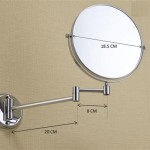Mirroring Content to a TV Screen
Mirroring, in the context of modern technology, refers to the process of displaying the screen content of one device (typically a smartphone, tablet, or computer) onto a larger display, such as a television screen. This process, often referred to as screen mirroring, allows users to share content, presentations, or simply enjoy mobile games or streaming services on a more expansive viewing platform. This capability has become increasingly prevalent in homes, classrooms, and business environments, offering convenience and enhanced engagement.
The functionality behind screen mirroring has evolved significantly over the years. Early methods often relied on wired connections, such as HDMI cables or VGA adapters, which provided a direct and reliable signal but lacked the flexibility and convenience of wireless solutions. Modern solutions predominantly utilize wireless technologies like Wi-Fi Direct, Miracast, Chromecast, and Apple AirPlay, enabling seamless mirroring without the constraints of physical cables. The specific protocol used depends largely on the devices involved and their compatibility. These wireless technologies function by creating a direct connection between the source device and the display, or by utilizing a local Wi-Fi network to facilitate the connection. Each protocol has its own strengths and limitations, influencing the mirroring performance and compatibility with various devices.
The benefits of screen mirroring are numerous. In a home entertainment setting, it allows users to easily share photos and videos from their phones or tablets with family and friends on a larger screen. In a professional environment, it facilitates presentations and collaborative work by allowing multiple users to view the same content simultaneously. Educationally, screen mirroring enables teachers to display educational materials and interactive lessons from their devices onto a classroom projector or interactive whiteboard. The versatility of screen mirroring makes it a valuable tool for a diverse range of applications.
Understanding Different Mirroring Technologies
Several wireless technologies are commonly employed for screen mirroring, each with its own operational mechanisms and compatibility considerations. A detailed understanding of these technologies is crucial for selecting the appropriate mirroring solution for specific needs.
Miracast is a wireless display standard developed by the Wi-Fi Alliance. It allows devices to connect directly to each other without requiring a Wi-Fi network. Miracast essentially creates a peer-to-peer connection, enabling devices to communicate directly and transmit screen content. This technology is supported by a wide range of Android devices and Windows-based computers. The key advantage of Miracast is its ability to function independently of an existing Wi-Fi network, making it suitable for scenarios where network connectivity is limited or unavailable. However, Miracast performance can be affected by interference from other wireless devices operating in the same frequency range.
Chromecast, developed by Google, is a device that plugs into a TV's HDMI port and allows users to stream content from their smartphones, tablets, or computers. Chromecast relies on a Wi-Fi network to function. The user initiates casting from a compatible app on their device, which then instructs the Chromecast to retrieve the content directly from the internet. While Chromecast is not strictly a screen mirroring technology, it offers a similar functionality by allowing users to project content onto a larger screen. Chromecast offers seamless integration with Google services and a wide range of streaming apps, making it a popular choice for home entertainment. Chromecast also allows for tab casting from a Chrome browser, which effectively mirrors the content of a specific browser tab onto the TV.
Apple AirPlay is Apple's proprietary wireless streaming technology. It enables users to stream audio and video content from their iPhones, iPads, and Mac computers to Apple TV or AirPlay-compatible speakers and televisions. AirPlay utilizes a Wi-Fi network to facilitate the connection between devices. A key advantage of AirPlay is its seamless integration within the Apple ecosystem, offering a consistent and user-friendly experience. AirPlay also supports screen mirroring, allowing users to display their entire device screen on a larger display. However, AirPlay is limited to Apple devices, making it less versatile than technologies like Miracast or Chromecast for users with a mix of devices.
Factors Affecting Mirroring Performance
The quality and stability of screen mirroring can be influenced by several factors. Understanding these factors is essential for optimizing the mirroring experience and troubleshooting potential issues.
Network Congestion is a significant factor, particularly when using mirroring technologies that rely on a Wi-Fi network. If the network is heavily loaded with other devices or activities, the available bandwidth for mirroring may be reduced, leading to lag, buffering, and intermittent disconnections. To mitigate this issue, it is recommended to use a dedicated 5 GHz Wi-Fi network, which typically experiences less interference and congestion than the 2.4 GHz band, or to reduce the number of devices using the Wi-Fi network simultaneously.
Distance and Obstacles between the source device and the display can also impact mirroring performance. Wireless signals weaken over distance and can be obstructed by walls, furniture, and other physical barriers. To ensure a stable connection, it is advisable to keep the source device and the display within close proximity and to minimize obstructions between them. The placement of the Wi-Fi router can also play a role; a centrally located router with good coverage can improve the overall reliability of the wireless connection.
Device Compatibility is a crucial consideration. Not all devices support the same mirroring technologies. For example, an older Android device may not support Miracast, or a non-Apple device may not be compatible with AirPlay. Before attempting to mirror, it is important to verify that both the source device and the display support the same mirroring protocol. Software updates can sometimes resolve compatibility issues, but it is always best to check the device specifications beforehand.
Processing Power and Memory of both the sending and receiving devices can affect the performance. Mirroring requires encoding and decoding video streams in real-time. Devices with limited processing power or insufficient memory may struggle to handle this task, resulting in lag or dropped frames. Closing unnecessary applications on both devices can free up resources and improve mirroring performance.
Troubleshooting Common Mirroring Issues
Even with careful planning and optimal conditions, users may encounter issues during screen mirroring. Some common problems and their potential solutions are described below:
No Connection: If the source device and the display fail to connect, the first step is to ensure that both devices are powered on and properly configured. Verify that the correct mirroring protocol is selected on both devices and that they are within range of each other. Restarting both devices can often resolve temporary connectivity issues. For Wi-Fi-based mirroring, ensure that both devices are connected to the same network. If using Miracast, check that the Wi-Fi Direct feature is enabled on both devices.
Lag and Buffering: If the mirroring experience is characterized by lag or buffering, the issue may be related to network congestion or interference. Try reducing the number of devices using the Wi-Fi network, moving the source device closer to the display, or switching to a 5 GHz Wi-Fi network. Closing unnecessary applications on both devices can also free up resources and improve performance. In some cases, adjusting the video quality settings in the mirroring app can reduce the bandwidth requirements and minimize lag.
Audio Issues: If audio is not transmitted correctly during mirroring, check the audio output settings on both the source device and the display. Ensure that the correct audio output device is selected and that the volume is turned up on both devices. Some mirroring protocols may require enabling audio mirroring separately. If using an external audio device, such as a soundbar or receiver, verify that it is properly connected and configured.
Black Screen or Distorted Image: If the display shows a black screen or a distorted image, the issue may be related to resolution incompatibility. Try adjusting the resolution settings on the source device to match the native resolution of the display. In some cases, a faulty HDMI cable (if using a wired connection) or a corrupted software update can also cause these issues. Updating the firmware on both the source device and the display can sometimes resolve compatibility problems.
Screen mirroring technology offers a convenient and versatile way to share content across devices. While various technologies and factors influence performance, understanding these aspects allows users to optimize their experience and troubleshoot potential issues effectively. This functionality has become an integral part of modern digital life, providing enhanced accessibility and collaboration in various settings.

Mirror Tv Television Pro Display

Mirror Tv Television Pro Display

Are Mirror Tvs Any Good Sg Interior Designers Previously Overmantels

Mirror Tv Television Pro Display

Eclipse Tv Cover By Electric Mirror Tvc 55 Emr615298

How To Make A Mirror Tv Step By Instructions

How To Make A Mirror Tv Step By Instructions

75 Framed Samsung Led Mirror Tv Model Un75ju641

Vanity Mirror Tv Vanishing Television For Your Bathroom

Aero Mirror Tv Screen Size 15 Inch At Rs 174720 Piece In New Delhi Id 21708669348








